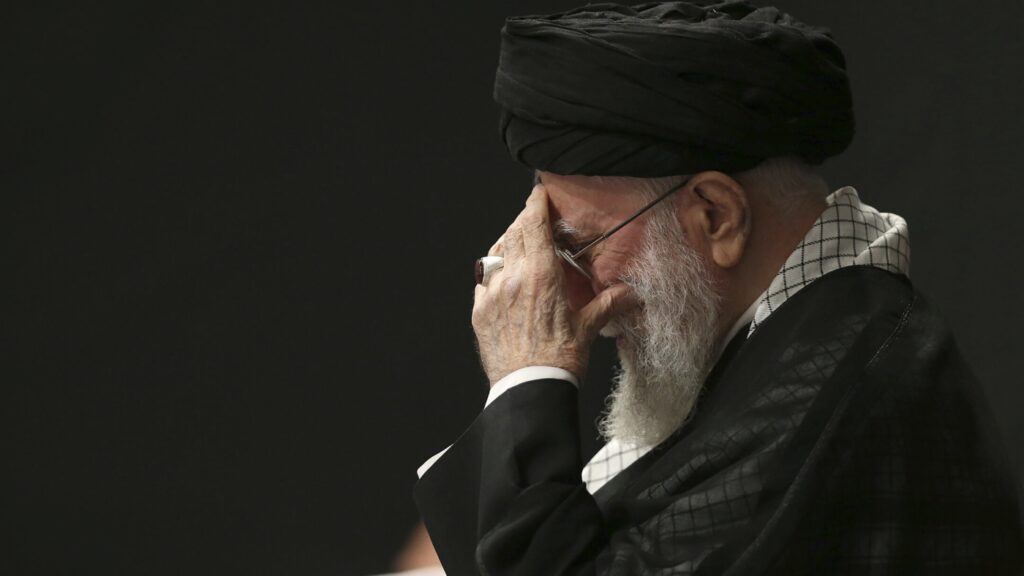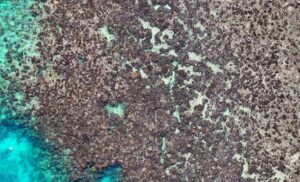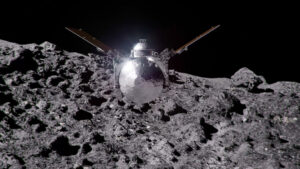
In this photo provided by the Office of the Iranian Supreme Leader, Supreme Leader Ayatollah Ali Khamenei attends a mourning ceremony commemorating the death anniversary of the Prophet Muhammad's grandson, Hussein, in Tehran, Iran, on Saturday, July 6, 2025. (Office of the Iranian Supreme Leader via AP)
Iran’s Supreme Leader Ayatollah Ali Khamenei made his first public appearance on Saturday since the onset of the 12-day conflict between Iran and Israel. The appearance took place during a mourning ceremony on the eve of Ashoura, a significant event in the Shiite Islamic calendar. This marks a notable moment as Khamenei, who holds ultimate authority over state matters, had been conspicuously absent, leading to speculation about his whereabouts during the conflict.
State television broadcasted images of Khamenei waving to a crowd that rose to greet him as he entered a mosque adjacent to his office in Tehran. There was no immediate statement from Khamenei, but the presence of high-ranking officials, including the parliament speaker, underscored the event’s significance. Security was notably tight, reflecting the heightened tensions in the region.
U.S. Involvement and Escalation
The conflict took a dramatic turn when the United States intervened by targeting three key nuclear sites in Iran. In response, President Donald Trump issued a warning to Khamenei via social media, stating that while the U.S. knew his location, they had no immediate plans to target him.
Following a ceasefire on June 26, Khamenei broke his silence with a prerecorded message, claiming that Iran had delivered a “slap to America’s face” by striking a U.S. air base in Qatar. He cautioned against further U.S. or Israeli aggression.
“Look, you’re a man of great faith. A man who’s highly respected in his country. You have to tell the truth. You got beat to hell.” — President Donald Trump
Impact on Iran’s Nuclear Program
The war has inflicted significant damage on Iran’s nuclear facilities, with over 900 casualties reported and thousands injured. Iran has denied U.N. inspectors access to these sites, complicating international oversight. President Hassan Rouhani has since suspended cooperation with the International Atomic Energy Agency, a move that further isolates Iran from the global community.
Israel initiated the conflict over fears that Iran was advancing towards developing nuclear weapons. In retaliation, Iran launched over 550 ballistic missiles at Israel, most of which were intercepted, resulting in 28 Israeli deaths and widespread damage.
Historical and Religious Context
The ceremony attended by Khamenei commemorated the martyrdom of Hussein, the Prophet Muhammad’s grandson, a pivotal event in Shiite Islam. Hussein’s death in the 7th century at Karbala, Iraq, is a cornerstone of Shiite identity, symbolizing resistance and sacrifice. The ceremony featured traditional mourning practices, including chest-beating and self-flagellation, with mourners dressed in black and red flags symbolizing Hussein’s blood.
Internet Disruptions Amidst Unrest
Coinciding with Khamenei’s appearance, NetBlocks, an internet monitoring organization, reported significant disruptions to internet services in Iran. This follows earlier shutdowns during the conflict, suggesting government efforts to control information flow. Connectivity was restored after approximately two hours.
The reemergence of Ayatollah Khamenei in public life amidst ongoing tensions and international scrutiny marks a critical juncture for Iran. The situation remains fluid, with potential implications for regional stability and global diplomatic efforts to address Iran’s nuclear ambitions.






